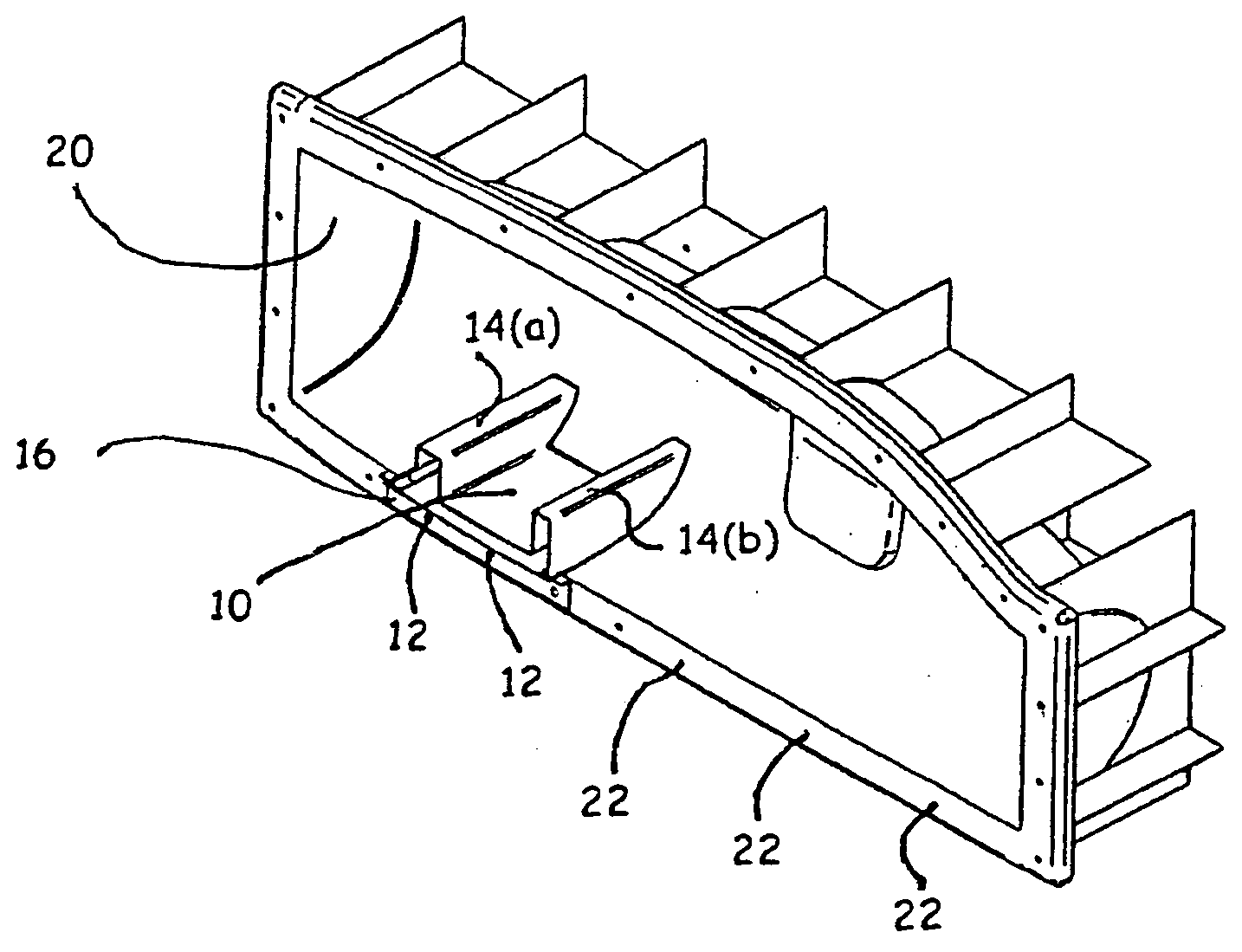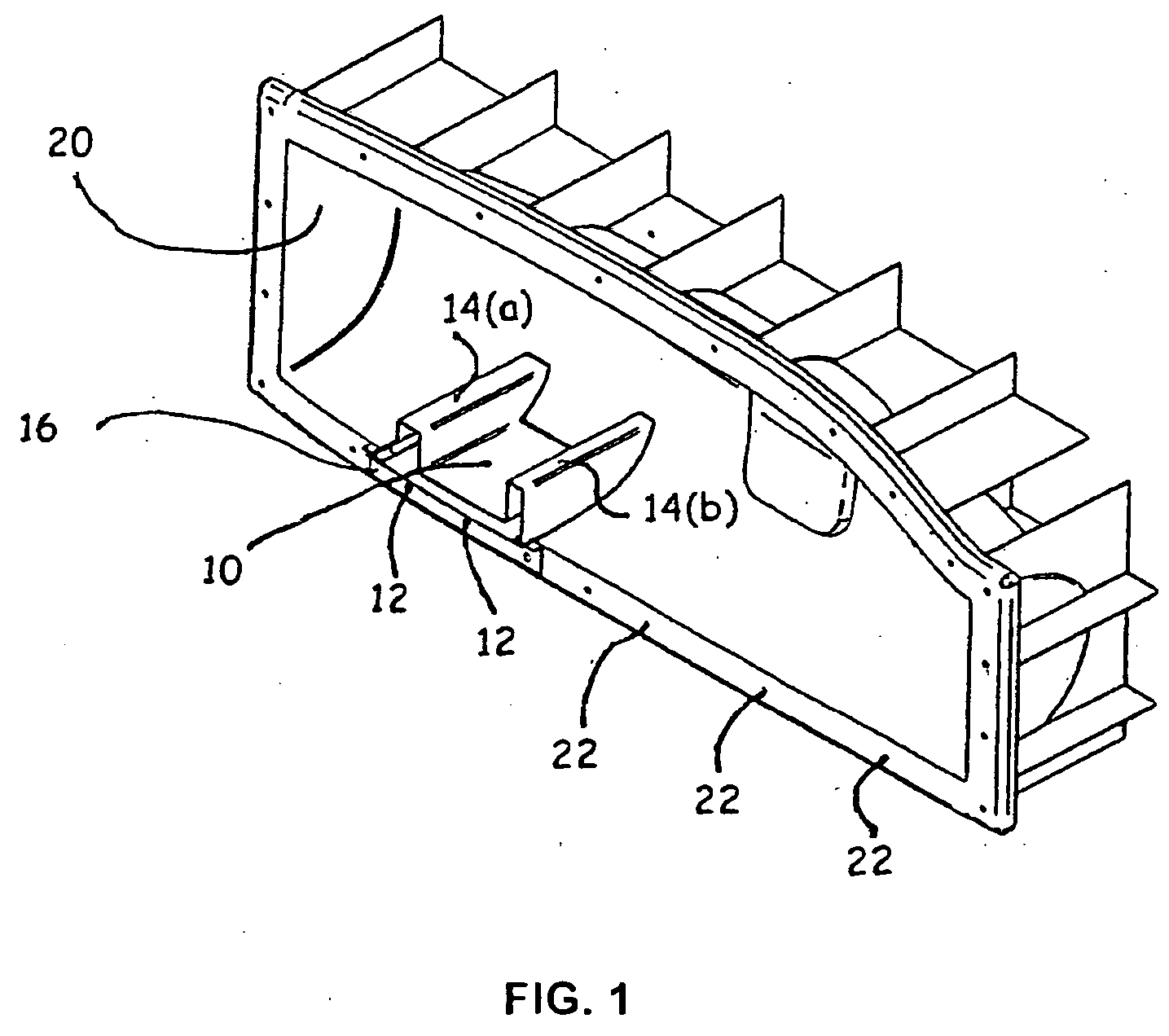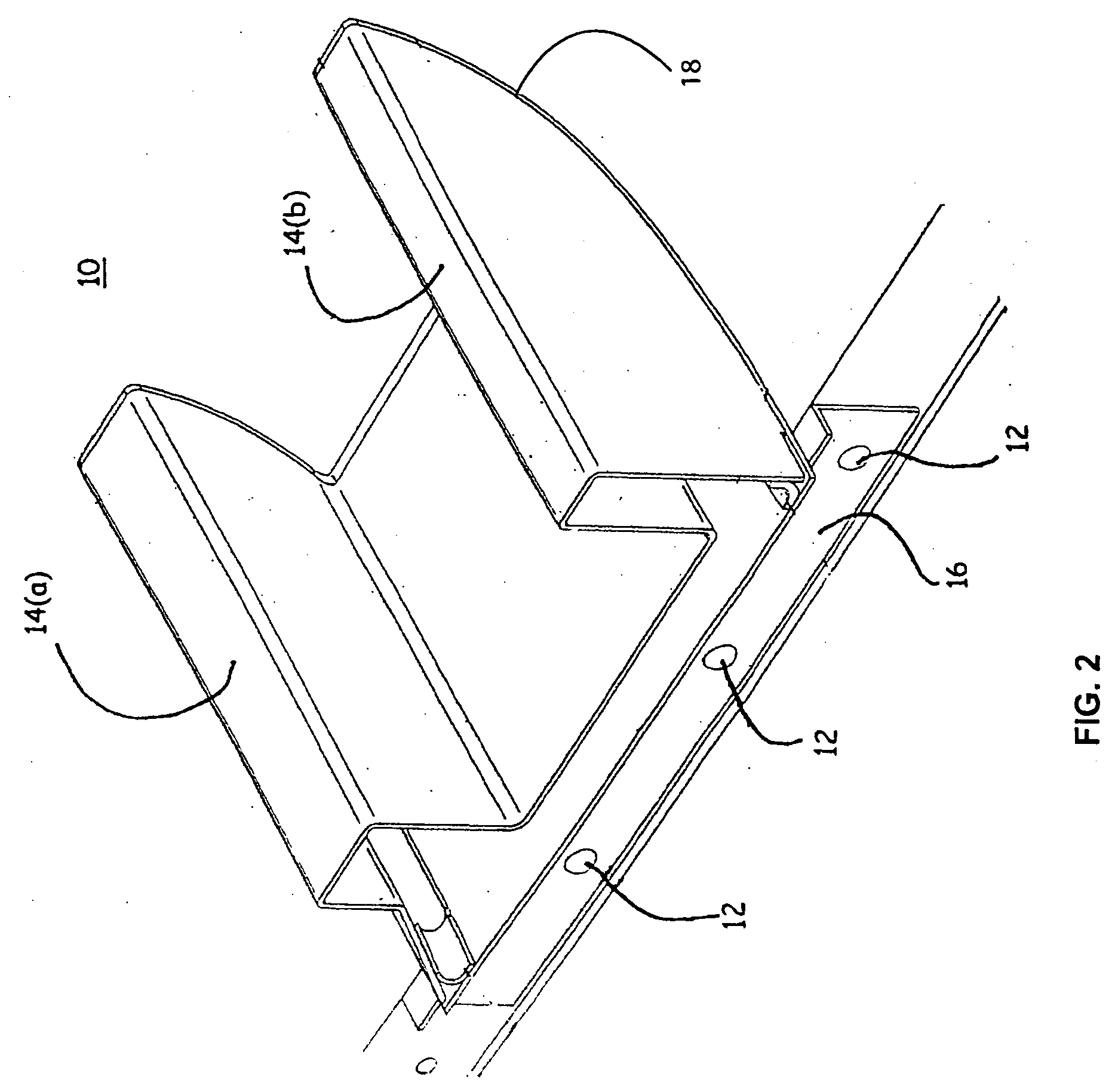Methods for manufacturing composite aircraft, parts and a family of composite aircraft
a composite aircraft and aircraft technology, applied in the field of methods, can solve the problems of aircraft being completely redesigned, aircraft and tools being completely redesigned, pilots experiencing significant difficulty in controlling aircraft during flight, etc., to achieve the effect of reducing the number of composite parts needed, less likely to leak or fail, and reducing the number of seams that must be bonded or fastened
- Summary
- Abstract
- Description
- Claims
- Application Information
AI Technical Summary
Benefits of technology
Problems solved by technology
Method used
Image
Examples
Embodiment Construction
[0031] Referring now to the drawings, where like or similar elements are designated with identical reference numerals throughout the several views, and referring in particular to FIG. 1, a modular spar tunnel tool 10 is shown mounted within a mold 20 for a portion of an airplane fuselage. A preferred form of the modular spar tunnel tool is shown in FIG. 2.
[0032] As shown in the drawings, the mold 20 has provided thereon one or more fixing connections 22 that preferably are designed to engage a corresponding set of fixing connections 12 provided within the modular spar tunnel tool 10. Thus, by adjusting the position of the modular spar tunnel tool 10 within the mold 20, the location of the spar tunnel of an aircraft can be readily adjusted to adjust for other design criteria, such as modifications to a seating arrangement or substitution of a propulsion system. The location and number of fixing connections in the Figures is exemplary and one of skill in the art can envision many way...
PUM
| Property | Measurement | Unit |
|---|---|---|
| gravity | aaaaa | aaaaa |
| time | aaaaa | aaaaa |
| shape | aaaaa | aaaaa |
Abstract
Description
Claims
Application Information
 Login to View More
Login to View More - R&D
- Intellectual Property
- Life Sciences
- Materials
- Tech Scout
- Unparalleled Data Quality
- Higher Quality Content
- 60% Fewer Hallucinations
Browse by: Latest US Patents, China's latest patents, Technical Efficacy Thesaurus, Application Domain, Technology Topic, Popular Technical Reports.
© 2025 PatSnap. All rights reserved.Legal|Privacy policy|Modern Slavery Act Transparency Statement|Sitemap|About US| Contact US: help@patsnap.com



